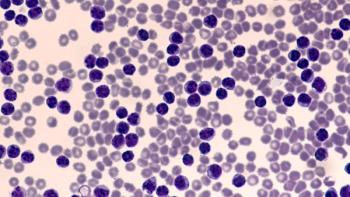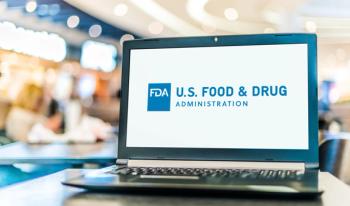
The State of Controlled Substance E-Prescribing
Now that electronic prescribing of controlled substances is permitted in all US states, pharmacists can expect e-prescriptions to gain momentum.
Now that electronic prescribing of controlled substances (EPCS) is permitted in
Ken Whittemore Jr, RPh, MBA, senior vice president of professional and regulatory affairs at Surescripts, provided an update on EPCS at the National Community Pharmacists Association (NCPA) Annual Convention, which is taking place in Washington, DC, from October 10-14, 2015.
In his presentation, Whittemore reviewed some of the challenges that paper prescriptions for controlled substances pose, such as fraudulent prescription pad forgery. EPCS, on the other hand, can reduce fraud and abuse, secure electronic records, and improve safety and patient care, Whittemore noted.
He also highlighted research from the US Department of Justice that found e-prescribing could result in an annualized cost savings potential of $700 million. Plus, EPCS can reduce the number of callbacks between pharmacies and prescribers and can remove the need to store paper prescriptions.
Whittemore noted that it has been 5 years since the Drug Enforcement Administration (DEA) published its interim final rule (IFR) that allowed for EPCS, but there have been challenges slowing down its adoption.
Despite the long length of time since the DEA issued its IFR and the efforts to spread awareness about EPCS, there is still some misunderstanding among pharmacists and physicians.
“We still find that many doctors and pharmacists are not aware of the fact that EPCS is legal, probably moreso on the physician side than the pharmacy side,” Whittemore noted.
He also spoke about networks, such as Surescripts, that enable pharmacy and prescriber applications of EPCS, provide standards for implementation, and connect pharmacy and prescriber software through a “trusted national health information network.”
Whittemore outlined several EPCS readiness steps for pharmacies:
· Upgrade the software system so that it can receive and archive electronic prescriptions.
· Achieve network certification, which involves the network and the pharmacy vendor working together.
· Undergo a third-party audit to ensure compliance so that pharmacy software applications meet DEA requirements for recording, receiving, and storing e-prescriptions for controlled substances.
The steps for physicians are similar, but they also have to go through an identity proofing process involving 2-factor authentication (TFA) credentials. These TFA credentials call for 2 of the following: something you are, something you know, and/or something you have. Whittemore likened this to how individuals use an ATM machine. The card is something the individual owns, and the PIN is what the individual knows.
For physicians, TFA credentials may take form in tokens or in biometrics, such as fingerprint scans. In other words, a physician might need a code and a fingerprint scan to write an EPCS.
EPCS momentum is growing, and Whittemore applauded pharmacists for their steady adoption.
“The pharmacies have done a good job stepping forward,” Whittemore said.
Nationally, EPCS monthly volume was around 1.8 million in September 2015—up from around 1.1 million in July 2015.
“It’s starting to take off,” Whittemore said.
Meanwhile, nationwide pharmacy EPCS adoption was around 64% in August 2015, meaning 64% of pharmacies had seen at least 1 EPCS in that month.
Whittemore noted that back when e-prescribing for non-controlled substances was gaining ground, it wasn’t until around 80% of pharmacies were accepting e-prescriptions that physicians started to show more interest in sending e-prescriptions for non-controlled substances.
“Once you get to that 80%, that seems to be the tipping point,” he said, suggesting physicians could react the same for EPCS.
Nationwide, only around 4% of prescribers are engaged in EPCS, though New York’s rate was more around 13%, according to Whittemore.
Whittemore also covered some regulatory changes related to EPCS, including a bill in Massachusetts that would require e-prescriptions for opioids.
Already, New York has passed
“All eyes are on New York to see how well that works,” Whittemore said. “And if it does work well, I think we’ll probably see a lot more mandates on a state-to-state basis going forward.”
Newsletter
Stay informed on drug updates, treatment guidelines, and pharmacy practice trends—subscribe to Pharmacy Times for weekly clinical insights.




















































































































































































































